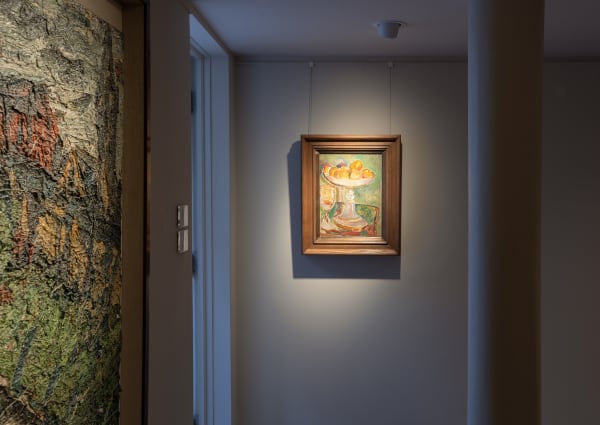Graham Sutherland
The gallery regularly handles, acquires and advises on works by Graham Sutherland. For more information or the availability of work, please contact the gallery.
Graham Sutherland (1903 - 1980)
Graham Sutherland abandoned an engineering career to study etching at Goldsmiths' College (1921-6). Until 1930 he made his living through etchings, working in the visionary Romantic style of Samuel Palmer. The collapse in the print market led him to take up painting in the 1930s; with his first visit to Pembrokeshire in 1934 he began to develop his distinctive landscape vision of 'imaginative paraphrase' and anthropomorphic abstraction, as inWelsh Landscape with Roads (1936; London, Tate). In 1936 he exhibited at the International Surrealist Exhibition in London. Sutherland was commissioned as a war artist in 1940, recording the effects of bombing in London, and the work of the Cornish miners. After the war he travelled abroad for the first time, to the south of France; he also began to paint portraits, which were generally acclaimed, although sometimes controversial, for example Somerset Maugham (1949; London, Tate), and Winston Churchill (1954; destr.). He converted to Roman Catholicism in 1926, he also executed a number of religious commissions, including a Crucifixion (1944) for S. Matthew's, Northampton, and a tapestry design, Christ in Glory (1954-7), for Coventry Cathedral. He was awarded the Order of Merit in 1960.
Text Source: The Oxford Companion to Western Art
-

London Art Week
Summer 2021 2 - 16 Jul 2021 Piano NobileFor London Art Week 2021, Piano Nobile presented an online display of paintings, sculpture and works on paper. Featured artists included Walter Sickert, Eric Gill, Alexander Calder and Frank Auerbach....Read more -

Defining British Art
1910 - 2000 17 May - 23 Jul 2021 Piano NobileThis exhibition reviewed the major creative outbursts in twentieth-century Britain, with paintings, sculptures, ceramics and textiles made by four generations of pioneering artists – from Sickert at the fin de...Read more










